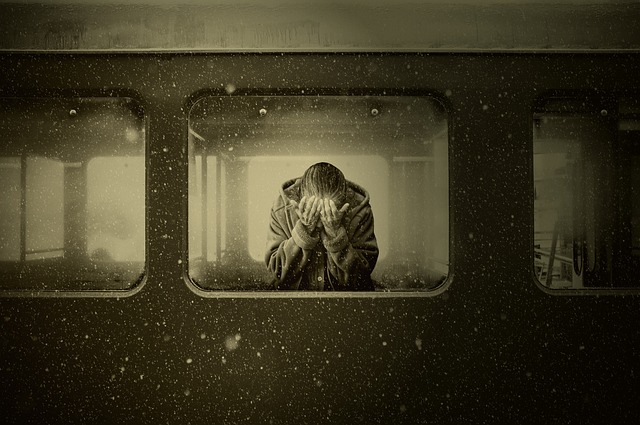When choosing between cremation and traditional burial for end-of-life arrangements, it's important to weigh the distinctions between these options. Cremation is a process where the body is heated in a furnace, resulting in cremated remains that can be memorialised in various ways, such as scattering or keeping them in urns, and even using them for keepsakes or art. This method is known for its simplicity, cost-effectiveness, and personalization options. Traditional burial includes embalming, selecting a casket and vault, often with a permanent grave site and a headstone to mark it. While steeped in cultural and religious significance, traditional burial can be more complex and expensive due to additional costs like plot purchase and maintenance fees. Cremation services are typically more affordable, ranging from $1,000 to $3,000, and offer greater flexibility in memorialization, which can be particularly comforting for those who prefer a straightforward process. The decision also involves considering the environmental impact of each option; cremation has a carbon footprint due to its energy requirements, but there are eco-friendly alternatives available. Both choices should align with personal values, budgetary constraints, and the individual's or family's wishes, ultimately aiming to honor the deceased in a meaningful way.
When contemplating the final chapter of a life’s story, individuals are presented with two primary options: cremation and traditional burial. Each method carries its unique set of considerations, from environmental impact to cultural significance. This article delves into the essential differences between these practices, illuminating the nuances of ‘Cremation vs Burial.’ We will explore the various facets, including the costs and practicalities associated with cremation services and traditional burials, as well as their respective environmental and cultural implications. Navigate through these options to make an informed decision that aligns with your personal beliefs and preferences.
- Understanding Your Options: Cremation Services vs Traditional Burial
- Comparing Costs and Practicalities of Cremation Services and Burial
- Exploring the Environmental and Cultural Considerations of Cremation Services and Burial
Understanding Your Options: Cremation Services vs Traditional Burial

When contemplating the end-of-life options for oneself or a loved one, understanding the differences between cremation services and traditional burial is paramount. Cremation offers a distinct process where the deceased’s body is cremated in a furnace, resulting in cremated remains. This method is often preferred for its simplicity, cost-effectiveness, and versatility in memorialization. Cremation services can be as personalized as a traditional burial, with options ranging from a simple ceremony to more elaborate gatherings that commemorate the life lived. Unlike traditional burial, which involves embalming, caskets, and often a permanent grave site, cremation allows for various ways to honor the deceased, such as scattering ashes in meaningful locations, keeping the remains in an urn at home, or even incorporating them into jewelry or art.
On the other hand, traditional burial maintains a longstanding cultural and religious significance. It involves interment in a cemetery plot, typically within a casket that is placed in a vault to prevent ground settlement. This option also includes headstones or markers to memorialize the deceased. The process of traditional burial can be more complex and costly, with considerations for plot purchase, maintenance fees, and the selection of a headstone. Both cremation services and traditional burial offer profound ways to say goodbye and remember the deceased, but they differ significantly in their execution and aftercare requirements. When making this decision, it’s essential to weigh personal beliefs, environmental considerations, cost implications, and the preferences of the individual or family involved. Whether choosing cremation services or traditional burial, the focus remains on honoring the life of the one who has passed and providing comfort to those left behind.
Comparing Costs and Practicalities of Cremation Services and Burial

When contemplating the end-of-life choices for oneself or a loved one, the decision between cremation and burial involves more than personal preferences; it also encompasses practical considerations such as costs and logistics. Cremation services typically present a lower cost alternative to traditional burial, with expenses ranging from basic cremation to more elaborate memorial services. The initial outlay for cremation may be significantly less, often between $1,000 to $3,000, depending on the provider and location, whereas burial can cost anywhere from $7,000 to $10,000 or more when including expenses for a casket, embalming, burial plot, and headstone. These costs are not one-time but extend to ongoing maintenance fees for the burial site. On the other hand, cremation eliminates such recurring expenses as land upkeep, which can be a deciding factor for many.
Furthermore, the practicality of cremation services extends beyond financial aspects. Cremation offers greater flexibility in memorialization, with options to scatter ashes in meaningful locations or keep them in urns at home. This can provide comfort and a sense of connection to loved ones who may wish to visit the site where the ashes are kept. In contrast, burial requires a fixed location, which might necessitate travel for those who move away. Additionally, cremation often allows for immediate disposition, which can be important for those seeking a simpler or more swift resolution following a loss. Both options have their merits and considerations; however, understanding the cost implications and practical differences is crucial in making an informed decision that aligns with one’s needs and values.
Exploring the Environmental and Cultural Considerations of Cremation Services and Burial

When contemplating the final wishes of an individual or making decisions for end-of-life planning, understanding the environmental and cultural implications of cremation services versus traditional burial is crucial. Cremation has emerged as a popular alternative to conventional interment, with its own set of environmental considerations. The process of cremation itself consumes significant amounts of energy, typically in the form of natural gas. This has led to increased scrutiny regarding the carbon footprint associated with crematorium operations. To mitigate this impact, some modern cremation services employ advanced technology designed to reduce energy consumption and emissions, such as electric cremators or those powered by renewable energy sources.
On the other hand, burial practices have their own cultural and environmental aspects to consider. Burial grounds, or cemeteries, occupy substantial tracts of land, which can impact local ecosystems. Additionally, the materials used for caskets and vaults often include non-biodegradable elements, contributing to environmental degradation. However, green burial options are increasingly available, emphasizing natural decomposition, the use of biodegradable materials, and conservation of surrounding habitats. These practices align with a growing movement towards sustainability and respect for the environment, reflecting diverse cultural values centered around reverence for nature and the dead. Both cremation services and burial carry significant environmental consequences, and it is essential to weigh these factors against personal beliefs, societal norms, and ecological responsibilities when making such decisions.
When contemplating the end-of-life choices for oneself or a loved one, it’s clear that both cremation and traditional burial serve as meaningful rituals honoring life’s legacy. The decision between these two options involves considerations of cost, environmental impact, and cultural significance. Cremation services offer a more economical and space-efficient alternative to traditional burial, making them an increasingly popular choice in modern society. This article has shed light on the key differences between cremation and burial, enabling individuals to make informed decisions that align with their personal beliefs, financial circumstances, and environmental values. Ultimately, whether one chooses cremation or burial, the essence of the farewell ceremony remains a poignant tribute to the life lived, reflecting the individual’s identity and legacy in a way that is both meaningful and respectful.



